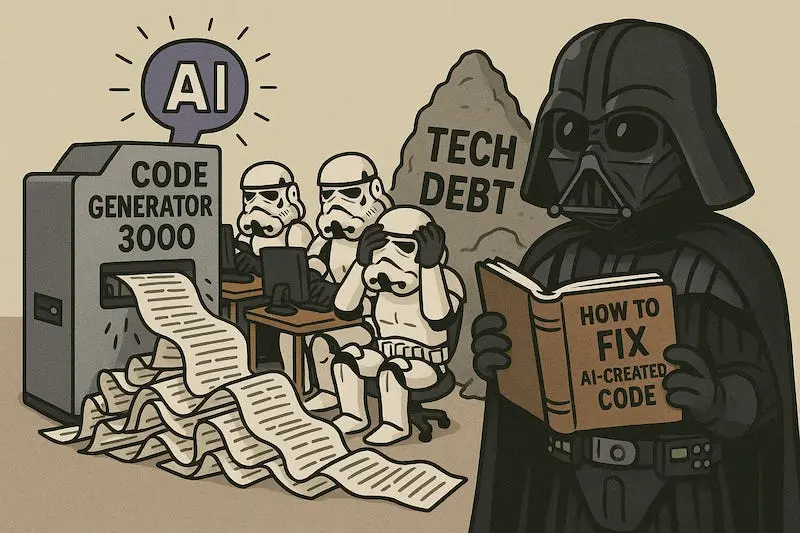
The AI Moderation Arms Race: When Safety Filters Become Content Killers
How Big Tech's liability paranoia is turning creative AI tools into overcautious censors
There’s a quiet war happening inside your favorite AI tools, and you’re the collateral damage. Across platforms, users are reporting the same frustrating experience: completely benign prompts getting flagged as inappropriate, creative work being neutered, and once-powerful AI assistants reduced to nervous babysitters. This isn’t your imagination, it’s the symptom of a liability-driven moderation arms race that’s making AI progressively dumber in the name of safety.
The Liability Paralysis
The prevailing sentiment across developer forums is that AI companies have cranked their content filters to “nuclear level.” Why? It’s pure risk aversion. One viral bad-faith output could trigger a PR disaster, regulatory scrutiny, or lawsuits. So rather than calibrate nuance, companies blanket-ban anything that might possibly be interpreted as problematic. The result? AI systems that can’t distinguish between genuine harm and harmless creativity.
This overcautious approach is turning AI tools into digital hall monitors. Users report that prompts which worked fine months ago now trigger safety warnings. The AI isn’t being judgmental, it’s just playing it super safe because its creators are terrified of liability. When your image generator refuses to draw a fully-clothed character in a non-sexual context because it detects “skin”, you’re not dealing with sophisticated ethics, you’re dealing with an algorithmic panic attack.
The OpenAI Case Study
The situation crystallized with OpenAI’s October 4th update, which significantly tightened content moderation for NSFW content. The company hasn’t been transparent about the specific changes, but users immediately noticed the impact. Some speculate this is preparation for children’s account features or a future age-gated system. Others believe it’s simply OpenAI covering its legal bases as AI regulation looms.
The backlash has been swift. One user explicitly stated they would cancel their Plus subscription if this moderation policy continues, arguing that if there’s no clear distinction between paying and free users, the subscription loses its value. Another frustration point: the overreach extends beyond NSFW content into factual information retrieval, with the model becoming more evasive and less useful across the board.
The Market Forces Behind Moderation Madness
This isn’t just happening in a vacuum. The cyber content filtering solution market is projected to reach $5.3 billion by 2031, growing at a 9.5% CAGR. Companies like Cisco, Fortinet, and Palo Alto Networks are all investing heavily in AI-driven content moderation tools. The same technology corporations that brought you innovative AI are now selling the digital handcuffs to keep it in line.
The financial incentives are perverse. Companies profit twice: first by selling AI tools, then by selling the moderation systems to constrain them. This creates a feedback loop where more sophisticated AI demands more sophisticated moderation, which in turn requires more advanced AI to develop. It’s a gold rush built on fear.
The Ethical Quagmire
Beyond the business implications lies a deeper ethical question: Is it right to restrict language models from freely using language? Users are losing their freedom of pure expression, not because they’re creating harmful content, but because companies have outsourced their moral reasoning to algorithms designed for maximum caution.
The situation reveals a fundamental tension in AI development. On one hand, companies want to unleash powerful creative tools. On the other, they’re terrified of those same tools generating something problematic. Rather than developing nuanced moderation systems, they’ve opted for blunt instruments that prioritize legal safety over user utility. It’s a trade-off that serves shareholders but screws users.
The Path Forward
So what happens next? If current trends continue, we’re looking at a bifurcated AI ecosystem. One path leads to increasingly restricted “safe” models that are practically useless for anything beyond corporate-sanctioned content. The other path involves age-verified systems with fewer restrictions, creating new privacy concerns and access barriers.
The real solution requires rethinking liability frameworks. Current law treats AI companies as publishers responsible for every output, creating incentives for over-moderation. Until we develop more sensible approaches to AI liability, users will continue to deal with tools that are more concerned with avoiding lawsuits than enabling creativity. For now, the AI moderation arms race continues, with innovation as its primary casualty.



